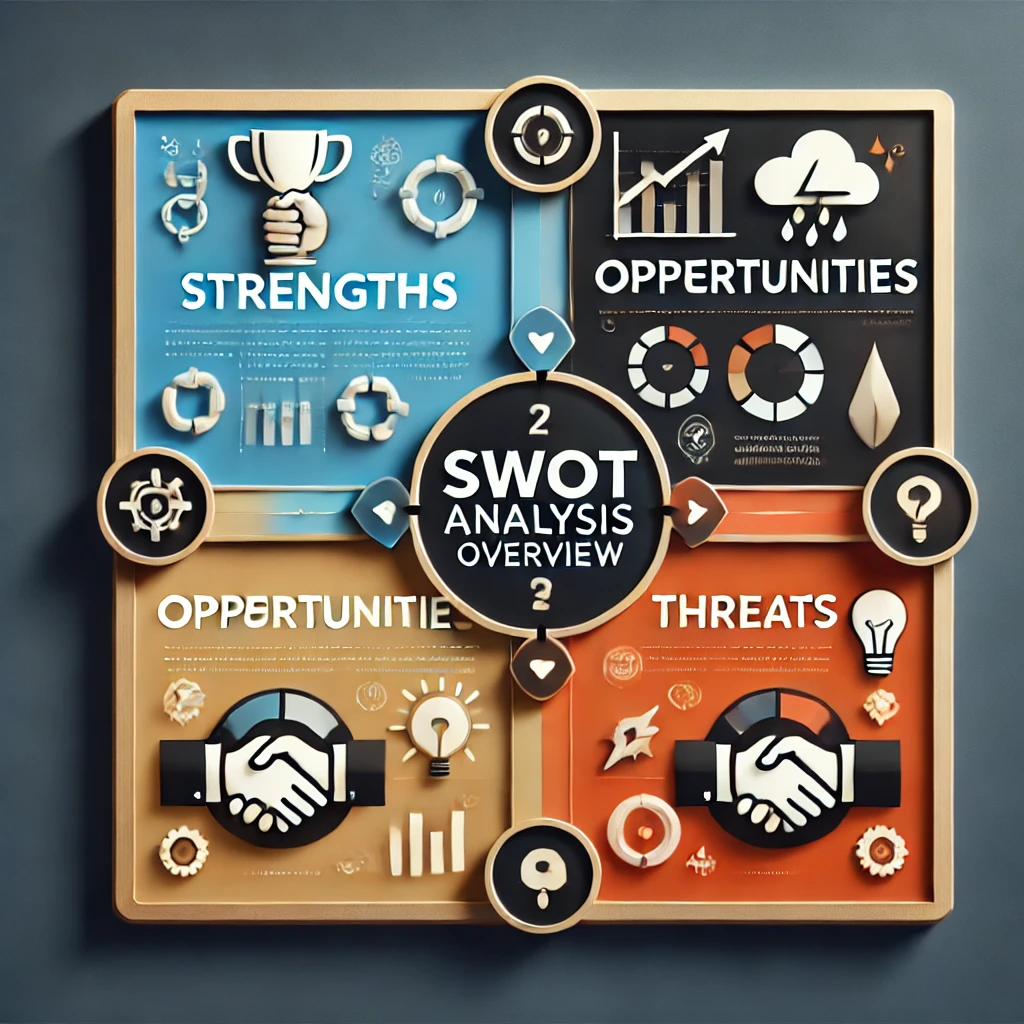
A SWOT analysis is an essential tool in business strategy, helping organizations identify internal strengths and weaknesses, as well as external opportunities and threats. When done correctly, this analysis provides a clear snapshot of your current standing and where your business can improve. This article will guide you through the process of conducting a comprehensive SWOT analysis that will allow you to make informed decisions, capitalize on opportunities, and minimize risks.
Introduction to SWOT Analysis
In the dynamic world of business, understanding your position in the marketplace is crucial for sustainable growth. A SWOT analysis—standing for Strengths, Weaknesses, Opportunities, and Threats—offers a structured method to evaluate your company’s internal and external factors. This framework gives you a deeper understanding of what’s working, what isn’t, and where your business could potentially go. A comprehensive SWOT analysis isn’t just about making observations; it’s about using those insights to craft strategic initiatives.
Understanding the SWOT Framework
Before diving into how to conduct a SWOT analysis, it’s important to grasp the elements that comprise this framework. The four quadrants—Strengths, Weaknesses, Opportunities, and Threats—work together to create a holistic view of your business environment:
- Strengths: Internal attributes and resources that contribute to your company’s success.
- Weaknesses: Internal limitations or areas for improvement that might hinder progress.
- Opportunities: External conditions that your business can exploit to its advantage.
- Threats: External challenges that could pose risks to your business’s success.
Each of these categories serves as a guide to understanding both what’s propelling your business forward and what may hold it back.
Why a Comprehensive SWOT Analysis Matters
It’s easy to make decisions based on gut feelings, but a comprehensive SWOT analysis provides a data-driven foundation for those decisions. Businesses often overlook certain factors that may significantly impact their performance. With a detailed SWOT analysis, you gain clarity on your business’s strengths that can be leveraged and vulnerabilities that need addressing. Moreover, it helps you discover new opportunities for growth and alerts you to potential threats that could derail progress.
In short, a comprehensive SWOT analysis helps you make informed, strategic decisions that enhance your business’s overall resilience and market position.
Strengths: Identifying Internal Success Factors
Every business has its unique strengths that contribute to its success. Identifying these strengths is the first step toward creating a strategy that capitalizes on them. These might include:
- A strong brand reputation.
- Loyal customer base.
- Proprietary technology or intellectual property.
- Skilled workforce.
By thoroughly understanding what makes your business stand out, you can focus on initiatives that maximize these strengths. For instance, if your company is known for excellent customer service, a strategy might involve expanding customer support efforts or developing loyalty programs.
Weaknesses: Addressing Internal Limitations
Just as important as identifying strengths is acknowledging weaknesses. Many businesses shy away from this, but recognizing internal limitations is crucial for improvement. Weaknesses may include:
- Outdated technology.
- Poor financial health.
- High employee turnover.
- Gaps in your product line or service offerings.
Pinpointing these weaknesses helps you address issues before they become larger problems. For instance, if your business has poor financial management practices, it might be time to invest in better accounting software or hire a financial advisor.
Opportunities: Tapping Into Market Potential
Opportunities are external factors that you can exploit to grow your business. These might come from emerging market trends, new technologies, or changes in consumer behavior. For example, a new government policy might open doors for expanding your services to new markets. Or, a shift toward digitalization may provide an opportunity to innovate through technology.
Seizing opportunities requires keeping an eye on market conditions and being agile enough to act swiftly. Successful businesses often use SWOT analysis to proactively monitor their environment and pivot when necessary.
Threats: Recognizing External Challenges
Threats represent external challenges that could negatively affect your business. These may include:
- Economic downturns.
- Increased competition.
- Changes in regulations or industry standards.
- Shifts in consumer preferences.
Understanding these threats allows you to prepare contingency plans or strategies to mitigate risks. For example, if a new competitor enters the market, your response could involve a marketing campaign that highlights your unique value proposition.
How to Collect Data for a SWOT Analysis
Data is at the heart of a thorough SWOT analysis. Relying on guesswork is a recipe for missed opportunities and threats. Start by gathering data from various sources:
- Internal audits: Evaluate your financial statements, performance reports, and employee feedback.
- Customer feedback: Conduct surveys or focus groups to understand customer satisfaction and areas for improvement.
- Competitor analysis: Research competitors’ strengths and weaknesses through public reports, customer reviews, and social media.
- Market research: Stay updated on industry trends and shifts by reading market reports or subscribing to industry newsletters.
The more comprehensive your data collection process, the more accurate your SWOT analysis will be.
You can also read; How to Scale Machine Learning Models for Large Datasets
Involving Key Stakeholders in the Process
A successful SWOT analysis involves input from key stakeholders across different levels of the organization. These could include managers, team leaders, employees, and even customers. Involving diverse perspectives ensures that the analysis is not one-sided and accounts for different viewpoints.
Leadership teams can provide insight into company strategy and vision, while frontline employees may highlight operational challenges. Customers can offer valuable feedback on what they love—or don’t—about your products or services.